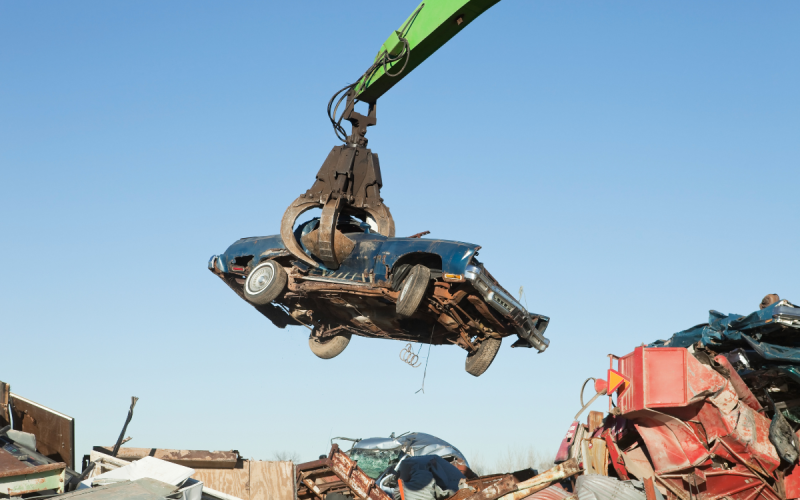When a car reaches the end of its life, many owners choose to sell it for scrap. This decision often comes after the vehicle becomes too old, too damaged, or no longer safe to drive. Selling a car for scrap may seem like the end of the road, but it is actually the start of a process that involves several important steps.
In this article, we explain what happens to your vehicle once it leaves your driveway, and how each part of the car is handled after it is sold for scrap.
Step One: Collection and Transport
After the sale, the vehicle is usually picked up by a car removal service. These services collect cars from homes, streets, or holding yards. The car is loaded onto a tow truck and taken to a facility where the next stage begins.
The process of collecting and transporting scrap cars is carried out under rules set by each state. The company must have the correct licences and follow proper safety rules during loading and travel. Once the car arrives at the yard, it is logged into the system and placed in a holding area.
Step Two: Initial Inspection
Before dismantling begins, the vehicle is inspected. This step helps workers decide how to handle the car. They look at the level of damage, the type of car, and whether any parts can be used again.
Some parts such as engines, gearboxes, or radiators may still work. If they are in reasonable shape, they are taken out, cleaned, and sold to workshops or private buyers. This reduces waste and helps other people find parts for their own cars.
Step Three: Safe Removal of Hazardous Materials
Cars contain several substances that can cause harm to the environment. These include oil, fuel, brake fluid, power steering fluid, and coolant. Each of these liquids must be removed carefully and stored in sealed containers.
Some batteries are also removed at this stage, especially if they are damaged or leaking. Tyres, which can be reused or sent for recycling, are also taken off. This stage is vital to avoid spills or pollution.
By handling these materials correctly, the yard ensures that nothing harmful enters the soil or nearby water systems.
Step Four: Dismantling and Sorting of Parts
Once dangerous items have been removed, the vehicle is stripped down. Workers take off panels, wheels, bumpers, lights, mirrors, and any other usable parts. These are sorted based on their type and condition.
Steel, aluminium, plastic, glass, and rubber are all separated. This is done to prepare the materials for recycling. Large machines are sometimes used to help with the dismantling, while smaller parts are often removed by hand.
The sorting stage is very detailed, as different metals must be processed in different ways. This helps improve recycling results and reduces the need to produce new raw materials.
Visit Car Removal Parramatta to sell your unwanted car for cash today: https://www.sydneycarremoval.com.au/car-removal-parramatta/
Step Five: Crushing and Shredding
After all reusable parts have been taken out, the remaining shell of the car is crushed. This step makes the vehicle easier to store and transport. Once crushed, it is fed into a large shredder.
The shredder breaks the car into very small pieces. This includes any last bits of metal, wiring, or padding still attached to the body. Once shredded, the pieces are passed through machines that separate metals from non-metals.
Magnets are used to collect steel and iron. Other methods are used to gather aluminium, copper, and plastic. These raw materials are then packed and sent to recycling centres or factories that use them in other products.
Step Six: Recycling and Reuse
The materials collected from the scrap car are sent to different industries. Steel from cars can be melted down and used to make new car frames, building materials, or tools. Aluminium is used in cans, machinery, or house fittings.
Plastics from the dashboard or bumper may be turned into new car parts or construction items. Glass from windows and mirrors can be reshaped into bottles or tiles.
This cycle of reuse helps save natural resources and energy. It also keeps older cars from being dumped in landfills where they would cause long-term harm to the environment.
The Role of Scrap Car Services in Suburban Areas
Many car owners in growing suburbs want a clear and honest way to clear old vehicles from their driveways. In some areas, parking laws are strict, or space is limited. For example, in western Sydney suburbs, people often choose fast car removal Blacktown services when they have a scrap car sitting idle. These services help clear space quickly, allowing owners to move on without having to deal with long delays or transport issues. The cars collected from these areas go through the same recycling steps mentioned above, which helps both the owner and the environment.
Final Thoughts
Selling a car for scrap is not just about getting rid of an unwanted vehicle. It marks the beginning of a long and careful process that gives each part of the car a new purpose. From draining dangerous fluids to recycling metal and plastic, each step helps protect the environment and reduce waste.
By knowing what happens after a car is sold for scrap, owners can feel more aware of their role in this cycle. The process also shows how old vehicles, when handled properly, can support industries and limit the need for new raw materials.












